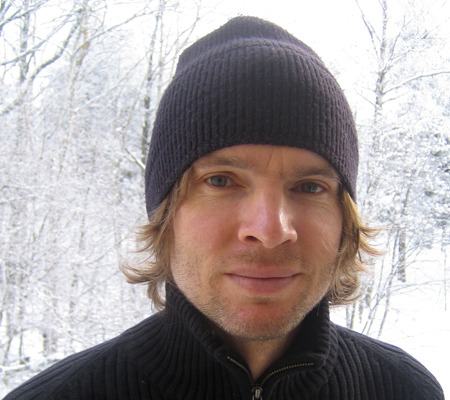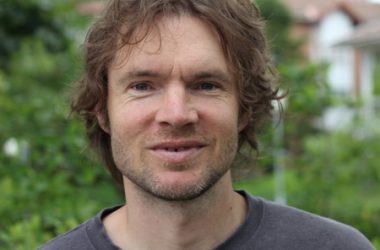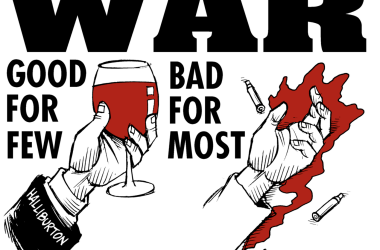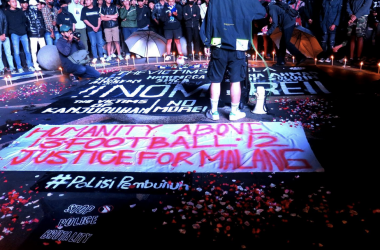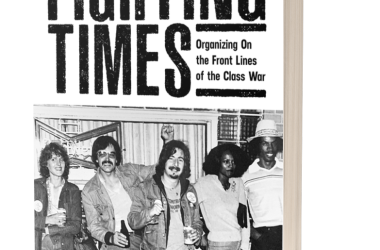By Gabriel Kuhn
This is a review of A Certain Amount of Madness: The Life, Politics and Legacies of Thomas Sankara, edited by Amber Murrey (London: Pluto Press, 2018).
In 2011, I visited Thomas Sankara’s grave on the outskirts of Ouagadougou, Burkina Faso’s capital city. It was a nondescript gravesite in a dry and barren cemetery. Someone had left flowers. Someone else was watching from a distance, perhaps working for the regime that had been involved in the killing of Sankara 14 years earlier.
The mundaneness of the experience felt almost surreal considering that I was visiting the grave of one of Africa’s most courageous and visionary politicians of the post-colonial era. Then again, this was at a time when Sankara was all but forgotten. The government of Burkina Faso, led by Sankara’s former ally Blaise Compaoré, did everything in its power to erase Sankara and his four-year presidency (1983–1987) from national memory. And internationally, despite being dubbed “Africa’s Che Guevara,” Sankara never received recognition even remotely comparable to that of the famed Argentinean revolutionary. Sankara’s reputation wasn’t even on par with renowned African socialists such as Kwame Nkrumah, Julius Nyerere, and Amílcar Cabral. There were several reasons for this: 1. The geopolitical insignificance of Burkina Faso, or Upper Volta, as it was still called when Sankara ascended to power. (I recall that, 14 years old, I asked one of my soccer coaches, who was also a geography teacher, about the name change that Sankara himself had initiated. I had heard about it on the news and was curious about the reasons. The coach shrugged his shoulders and said, “Down there, they change names all the time.”) 2. In the 1980s, when Sankara came to power, hopes that a global antiimperialist struggle led by Third World forces would overthrow capitalism had all but disappeared. 3. Sankara avoided clear ideological affiliations. While a policy of non-alignment seems wise in many ways, it also meant that Sankara did not have much weight on the late Cold War battlefield. 4. Sankara came to power through a military coup, not a romantic liberation struggle. 5. Unlike most socialist leaders from the Third World, Sankara left virtually no writings.
For more than a decade after my visit to Burkina Faso, I only encountered Sankara in the form of the Pathfinder Press edition of Thomas Sankara Speaks, which some Trotskyite groups in Stockholm bring to their book tables. Unfortunately, the folks manning the tables were never very eager to discuss the contents.
Much changed with the Burkinabé uprising of 2014. As stated several times in A Certain Amount of Madness, the uprising rekindled interest in Sankara, his politics, and his legacy. The release of the book itself might have been impossible without it.
The uprising led to the ousting of Compaoré and his government. Sankara’s grave was opened in May 2015 in search for his bodily remains. Fiona Dragstra writes about this in her contribution “‘We Are the Children of Sankara’: Memories as Weapons during the Burkinabé Uprisings of 2014 and 2015.”
How strong the Sankara revival has become is illustrated by the sheer scope of A Certain Amount of Madness. In 23 articles, scholars from across the globe, representing various academic disciplines, share their findings and views on Sankara, his thoughts, and actions.
The book is divided into four parts: “Life and Revolution” provides a political history of Burkina Faso, portrays Sankara, and described his rise to power. “Political Philosophies” is dedicated to Sankara’s principles and policies. “Legacies” traces his impact on political life in Burkina Faso and beyond. “Contestations and Homages” explores Sankara’s representation in academia and the arts.
Repetitions are inevitable in a volume like this. They are no big problem, even if you read all the chapters rather than selecting a few. Only in Part II do some articles overlap significantly. Here, some more rigorous editing might have helped.
Key contributions are “Military Coup, Popular Revolution or Militarised Revolution?: Contextualising the Revolutionary Ideological Courses of Thomas Sankara and the National Council of the Revolution” by De-Valera N. Y. M. Botchway and Moussa Traore, as well as “Madmen, Thomas Sankara and Decoloniality in Africa” by Ama Biney. Each of the book’s chapters is of impressive quality, but these two provide the framework necessary to understand all else.
Some of the contributors differ in opinion, for example with regard to whether Sankara’s years in power deserve the title “revolution,” or whether it is appropriate to refer to Sankara as a “Marxist.” These differences are only positive, as they help paint a picture complex enough to be credible.
While the Sankara revival is first and foremost tied to the Burkinabé uprising, this uprising itself needs to be situated within a broad global protest movement against authoritarian rule and social injustice, reaching from the Arab Spring to Occupy. This explains why the significance of Sankara today also relates to the “antiimperialist comeback” I recently discussed with Torkil Lauesen.
Sankara’s commitment to the liberation of the oppressed, his focus on self-reliance, and his personal integrity are all desperately needed. His advocacy of women’s rights and his awareness of environmental issues are stressed by several of the book’s contributors. His blend of ideas appeals to people schooled in intersectionality. Botchway and Traore write: “Sankara’s political philosophy as well as his praxis was informed by a plethora of revolutionary and radical ideas, including anti-imperialism, populism, Pan-Africanism, military nationalism, African Socialism and forms of Marxism. He was influenced by the concepts of pragmatism and pacifism. Sankara’s philosophies and actions can serve as a social guide and praxis for social change, one that can perhaps be called ‘Sankaraism.’”
Eclecticism, however, is not without its problems. In his contribution, “Thomas Sankara and the Elusive Revolution,” Leo Zeilig quotes from the field notes of Frantz Fanon: “Colonialism and its derivatives do not as a matter of fact constitute the present enemies of Africa. In a short time this continent will be liberated. For my part, the deeper I enter into the cultures and the political circles the surer I am that the great danger that threatens Africa is the absence of ideology.”
Of importance for revolutionary strategizing is also the role of radical soldiery, from which Sankara emerged. Several contributors stress this. However, perhaps this also implies the danger of authoritarianism. Zeilig writes: “The story of Sankara is one of absences: of other social forces, of radical left organizations, of a social base that could have sustained his project.” An excellent chapter on the troubled relationship between Sankara and Burkina Faso’s trade unions is provided by Craig Phelan.
It is fortunate that A Certain Amount of Madness is not presenting an idol. Idolization rarely helps. What we rather need is critical engagement and inspiration. It is encouraging that A Certain Amount of Madness does not belong to the all too numerous academic anthologies that combine a random and disjointed selection of texts under an attractive but misleading title. The book is well structured, politically committed, and highly relevant. As Horace Campbell states in his foreword: “The 23 chapters of this book on Sankara remind the younger generation of what a life of dignity can do for peoples everywhere.”
The fact that Horace Campbell penned the foreword also closes a personal circle. Campbell’s book Rasta and Resistance: From Marcus Garvey to Walter Rodney opened up a new world for me when I read it as a teenager living in a peasant village in the Austrian Alps. It was an important reason for my decision, some years later, to travel to the Caribbean and Africa in order to learn more about the history I had encountered in its pages. Without it, I might have never made that visit to Sankara’s grave.
(July 2018)
More blogs from Gabriel | Back to Gabriel Kuhn’s Author Page

